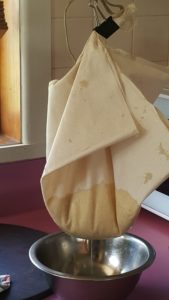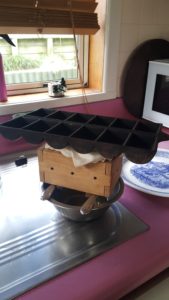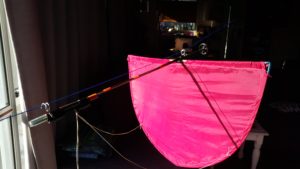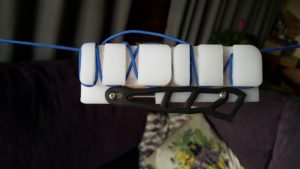 I made labneh without knowing the name for it about 40 years ago. I had access to yogurt that was at/beyond expiry dates. So I did
I made labneh without knowing the name for it about 40 years ago. I had access to yogurt that was at/beyond expiry dates. So I did 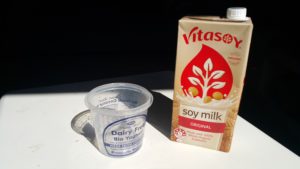 try hanging some of it in cheesecloth to drain. I don’t remember being all that impressed with it, but it was an interesting approach.
try hanging some of it in cheesecloth to drain. I don’t remember being all that impressed with it, but it was an interesting approach.
And now, years later, I find it is related down that line from yogurts to such as Greek yogurt (a drained product) and then more directly to labneh. Labneh – real  labneh – would be made with probably cow’s milk yogurt, hung for a few hours to drain. Incredibly easy to make…
labneh – would be made with probably cow’s milk yogurt, hung for a few hours to drain. Incredibly easy to make…
Well, for whatever various reasons, what I make is off-recipe, I guess. I got a cheap yogurt maker a few weeks back at the Salvation Army. Works fine – no  thermostat, but what seems a pretty consistent heat.
thermostat, but what seems a pretty consistent heat.
The batch today is from soy milk. Just off the shelf. I did add a blob of coconut cream into this yogurt, but can’t say I can taste it. I use a couple of blobs of a commercial coconut cream probiotic yogurt. I haven’t tried any cow’s milk, but I think for the most part they rely on same/similar bacteria.
I let it set for 8 hours – overnight. I put the finished product into the fridge for a few hours. Sometimes it can still be a bit runny if it is warm, just out of the maker – best to let it cool completely.
Sometimes the yogurt will be pretty much ‘set’ – but still seems to be too creamy and smooth and loses the ‘yog’. I just runs down like cream through the cloth. Today’s was somewhat like that. I first tried pouring into two layers of cheesecloth. Too open – ran through too readily. So I used a piece of Metric Fat Flat. Cotton, apparently made for quilters? But a slightly open weave – and it drained the yogurt just fine.
Then, after a couple of hours of hanging, I put it into the tofu press – and this time, it will be a full sized block, not like the thin thing I made last time!
I’m not going to press it quite as heavy as I did the last time, but may increase it depending on how much liquid comes out. It still has quite a bit of liquid to drain, I think…
